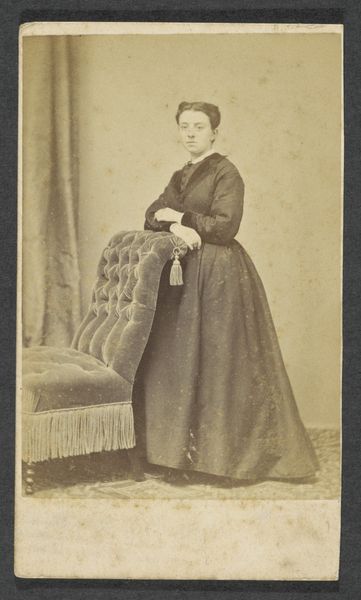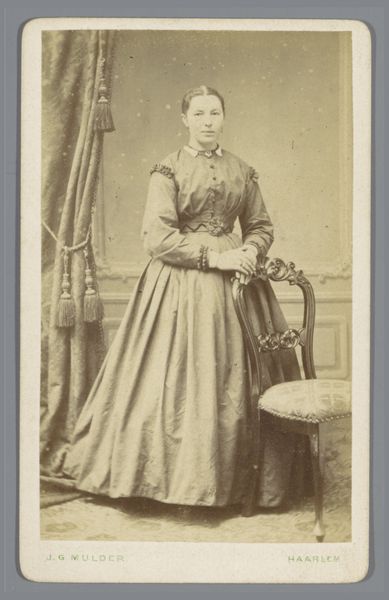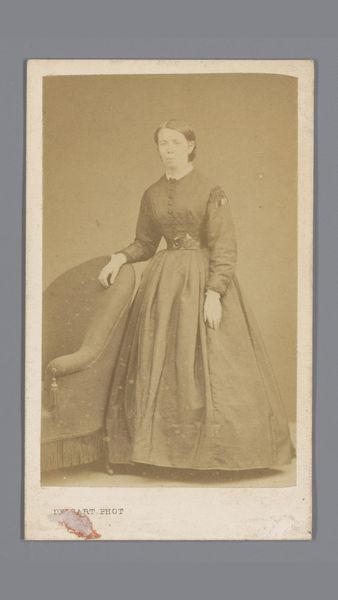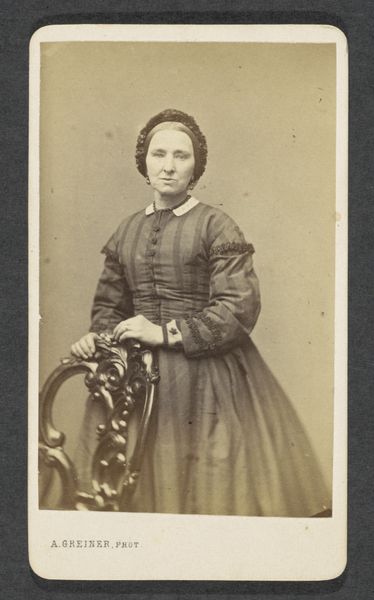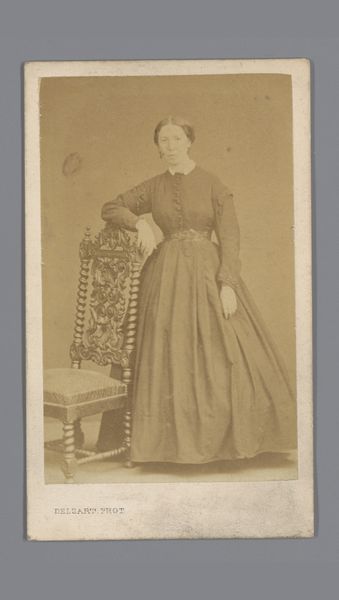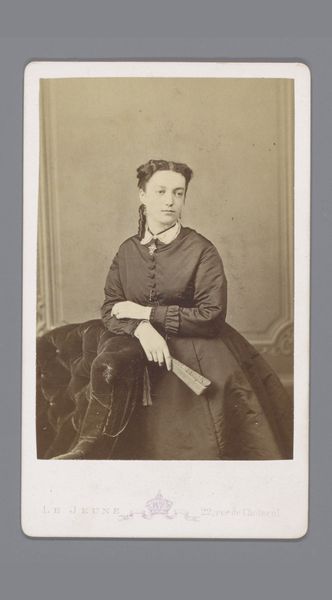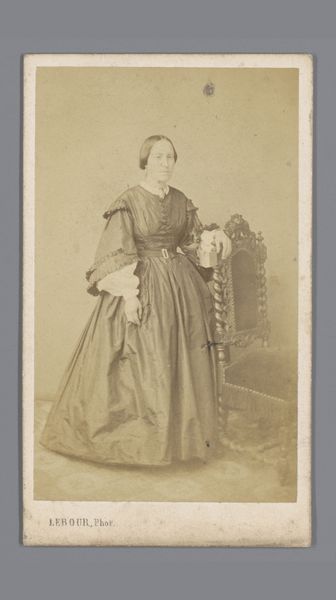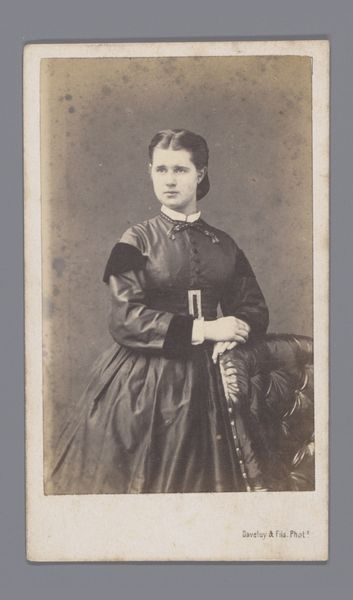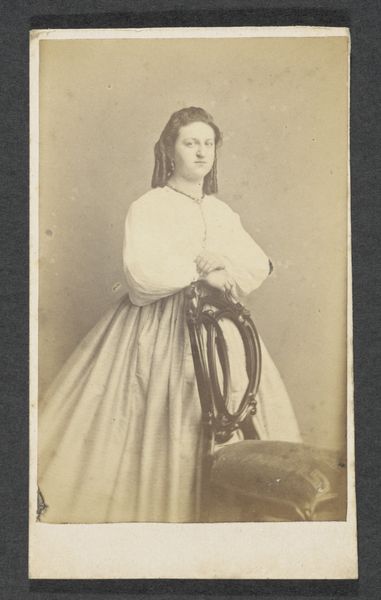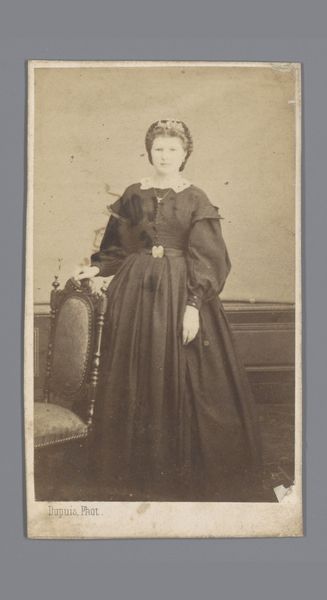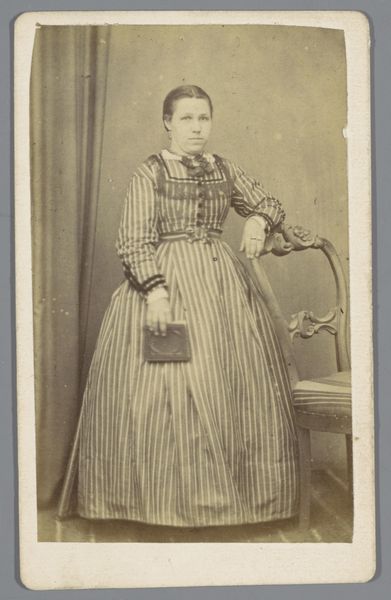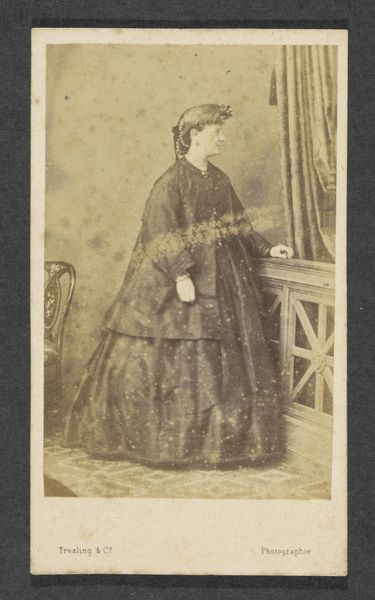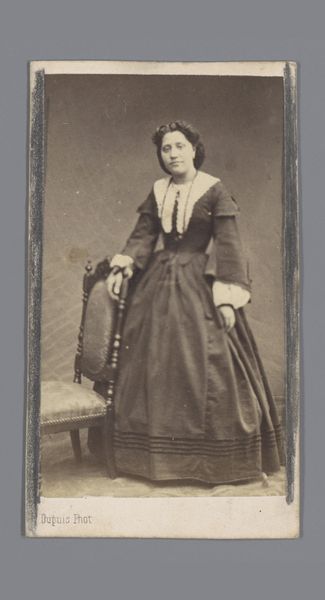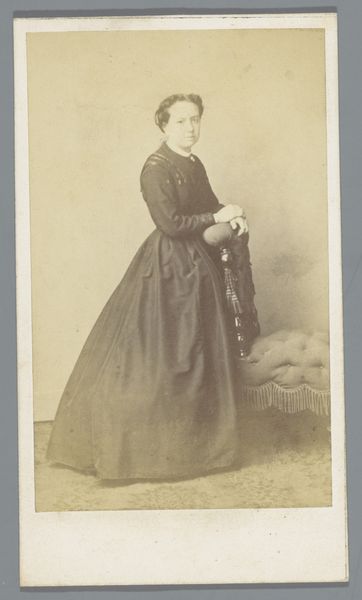
Portret van een onbekende jonge vrouw uit de familie Marmelstein 1867 - 1870
0:00
0:00
photography
#
portrait
#
photography
Dimensions: height 100 mm, width 65 mm
Copyright: Rijks Museum: Open Domain
Editor: This photographic print, “Portret van een onbekende jonge vrouw uit de familie Marmelstein,” dating from 1867 to 1870, is attributed to S. van Caspel & Stapert. It's quite striking, with the sitter’s dark dress contrasting with the pale background. What jumps out at you when you look at this photograph? Curator: I'm immediately drawn to the materiality of this piece. Photography in the 19th century was a laborious process, involving the careful preparation of glass plates, precise timing, and controlled chemical reactions. Look closely at the chair. How accessible would furniture like this have been, and what does its inclusion here tell us about aspirational social status? Editor: I hadn’t considered that! So, the choice of the chair highlights more than just an aesthetic element, but the effort for social promotion. Curator: Exactly! Consider also the sitter’s clothing. What kinds of industries existed to create it, and what forms of labour were involved? Notice, also, the very visible chemical imperfections that came to be viewed as ‘imperfections.’ This really challenges the traditional notion of ‘high art.’ It wasn’t painting, but the intense effort to achieve the desired result challenges art's definition. Editor: So, understanding the materials and production provides a rich context for appreciating not just what's depicted, but the wider economic and social context of its creation. Is this where the value truly lies? Curator: Partly. By examining the labor and processes embedded within the photograph, we recognize a complex network of making, not just artistic talent, and that’s important. We avoid elevating ‘taste’ and look to understand historical reality. Editor: That’s fascinating. I see the photograph in a completely different light now, less about a posed portrait and more about the physical and social environment that brought it into being. Curator: Indeed. It moves our attention from the single author to wider cultural production. A materialist perspective enriches our perception of any work, particularly something as seemingly simple as a photographic portrait.
Comments
No comments
Be the first to comment and join the conversation on the ultimate creative platform.
